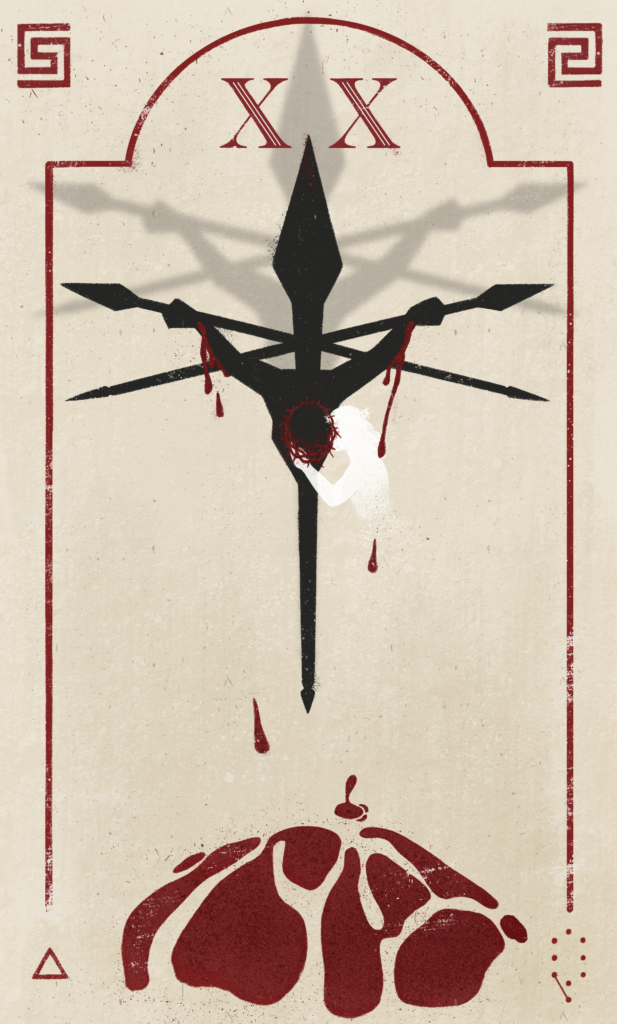
I love the Adrastus story too much not to make a drawing of it. While conceptualizing, I intuitively associate it with the Judgment tarot card. The card is usually interpreted as facing the consequences of one’s actions, judged by an impartial, impersonal cosmic force that is almost like karma (as opposed to the human intellect in Justice), but in my experience, it sometimes represents the self-imposed constraints of our worldview, the rules we unknowingly bind ourselves with. A section in the Bible happens to fit my understanding of the card: “Do not judge, or you too will be judged. For in the same way you judge others, you will be judged, and with the measure you use, it will be measured to you.” (the Gospel of Matthew, 7:1-2) Adrastus’ judgment of himself as an irredeemable murderer is what killed him. What strikes me about Adrastus’ choice is that he chooses to take the blame and even die for it, when he is merely an actor in the (random?) design of the universe. Then in my head, his image suddenly overlaps with Jesus, who is often believed to have died for the sins of all humans. Adrastus’ cross would be the spear, by which he deems himself responsible for the death of Atys.
I included a specter who embraces (kisses?) Adrastus on the cross. I understand it to be the specter of his brother, who probably never blamed Adrastus for his death in the first place. I don’t think his brother would want to see Adrastus ending his life like this. The specter also has a crown of thorns as an obscure reference to the Grand Inquisitor scene in Dostoyevsky’s Brothers Karamazov. In that narrative, Jesus’ silent kiss in response to the Grand Inquisitor’s verdict is the epitome of unconditional love and compassion, something I wish Adrastus saw in other people and in himself. But maybe he wouldn’t believe it even then. Just like how the character Ivan concluded the story of the Grand Inquisitor with “The kiss burns in his heart, but the old man adheres to his former ideas.”, Adrastus also didn’t believe that the king actually forgave him. And this is the cruelty of self-Judgment.
About the drawing itself, I included some esoteric correspondences (elemental and Tree of Life) of the card. The title “Judgment” is written in Russian as “СУД”, mostly because it is much easier to design with 3 letters than 8, and I also want to remain consistent with the Queen of Swords I drew last semester. The position of Adrastus is heavily based upon Christ of Saint John of the Cross (1951) by Salvador Dali.

Christ of St. John of the Cross
Salvador Dali
Date: 1951
Media: oil, canvas
Location: Kelvingrove Art Gallery and Museum, Glasgow, UK